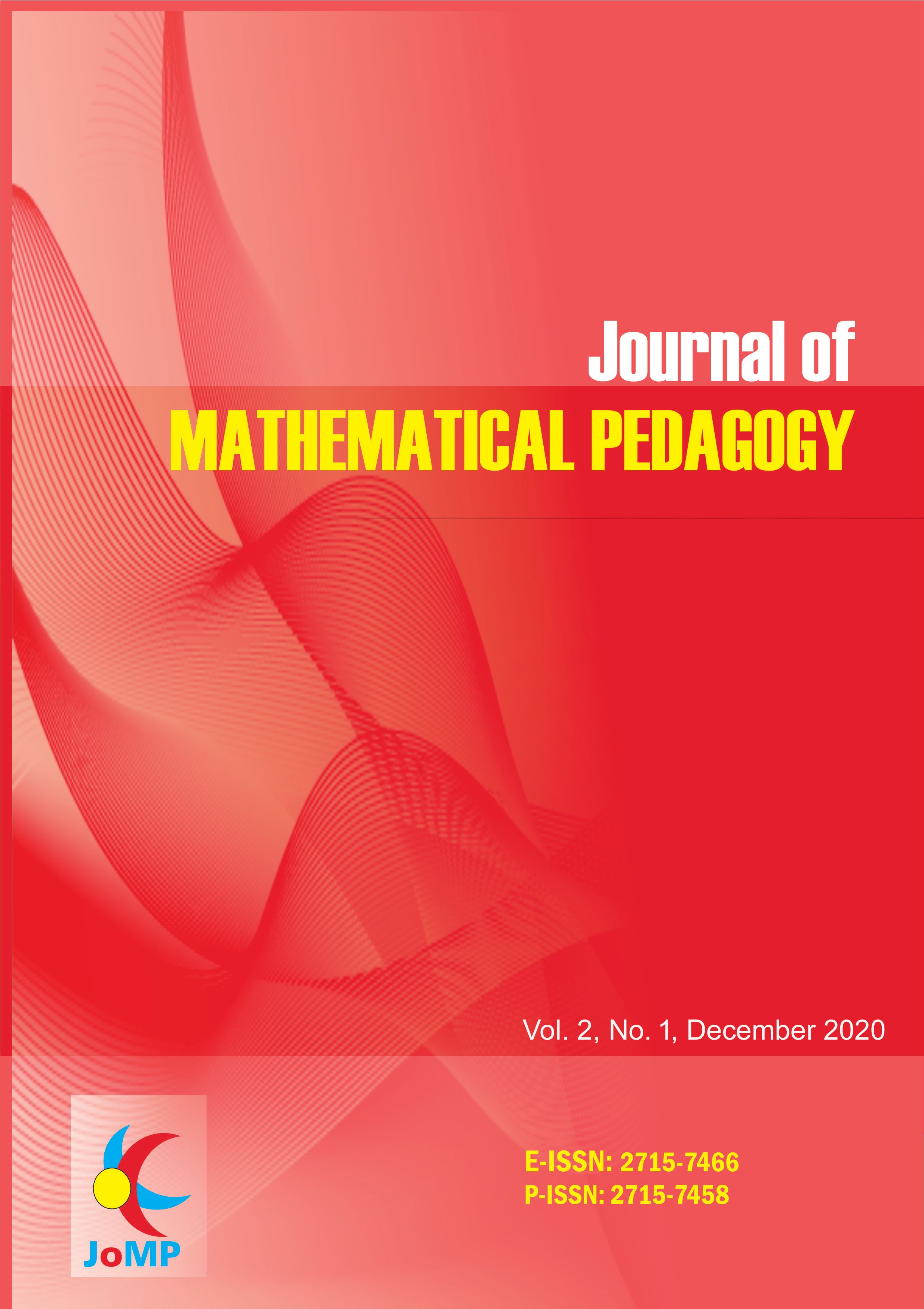The 10th Grade Students' Folding Back Process in Solving Decimal Problem with Field-dependent and Field-independent Cognitive Styles
DOI:
https://doi.org/10.26740/jomp.v2n1.p1-7Keywords:
Folding back, decimal problem, field-dependent (FD), field-independent (FI), cognitive stylesAbstract
The purpose of this study was to describe the folding back process of 10th grade students with field-dependent (FD) and field-independent (FI) cognitive styles in solving decimal problems. This research was conducted explorative with a qualitative descriptive approach. The subjects in this study were two students grade X at SMA Al Muslim Surabaya. The subjects chosen based on a different of the FI-FD cognitive style was carried out by giving a cognitive style test, then a group of students with a cognitive style of FI and a group of students with a cognitive style of FD were selected. This results is the GFI subject can determine the definition of a decimal number when presenting a decimal number on a ruler and at that time the GFI subject experiences folding back. Folding back also occurs when the GFI subject determines the size ratio of decimals, decimal number operations and when converting decimal numbers into fractions and percentages. Then for GFD subjects must be given a stimulus first using the original numbers given commas and zeros, then the GFD subject changes his opinion on decimal numbers.
Keywords: Folding back, decimal problem, field-dependent (FD), field-independent (FI), cognitive styles
References
Davis, B. (1997). Listening for differences: An evolving conception of mathematics teaching. Journal for research in mathematics education, 28(3), 355-376.
Dubinsky, E. (2001). Using a Theory of Learning in College Mathematics Courses. Coventry: University of Warwick
Huberman & Miles. (2014). Analisis Data Kualitatif. Jakarta: Universitas Indonesia
Mabotja, S., Chuene, K., Maoto, S., & Kibirige, I. (2018). Tracking Grade 10 Learners' Geometric Reasoning through Folding Back. Pythagoras, 39(1), 371.
Martin, L., LaCroix, L., & Fownes, L. (2005). Folding Back and the Growth of Mathematical Understanding in Workplace Training. Adults Learning Mathematics, 1(1), 19-35.
Meel, D. E. (2003). Models and theories of mathematical understanding: Comparing Pirie and Kierens model of the growth of mathematical understanding and APOS theory. CBMS Issues in Mathematics Education, 12(2), 132-181.
Parameswaran, R. (2010). Expert Mathematics' Approach to Understanding Definitions. Mathematics Educator, 20(1), 43-51.
Pegg, J., & Tall, D. (2005). The fundamental cycle of concept construction underlying various theoretical frameworks. ZDM, 37(6), 468-475.
Pirie, S., & Kieren, T. (1994). Growth in mathematical understanding: How can we characterise it and how can we represent it?. In Learning Mathematics (pp. 61-86). Springer, Dordrecht.
Polya, G. (1973). How to Solve It-A New Aspect of Mathematical Method (Second edition). New Jersey: Princenton University Press
Saracho, O. N. (1997). Teachers and Students Cognitive Styles in Early Childhood Education. London: Greenwood Publishing Group.
Stacey, K., & Steinle, V. (1999). A longitudinal study of children's thinking about decimals: A preliminary analysis. In PME CONFERENCE (Vol. 4, pp. 4-233).
Susiswo. (2014). Folding Back Mahasiswa dalam Menyelesaikan Masalah Limit Berdasarkan Pengetahuan Konseptual dan Pengetahuan Prosedural. In Prosiding Seminar Nasional TEQIP (Teachers Quality Improvement Program) (pp. 1-10). Malang: Universitas Negeri Malang
Thornell, J. G. (1976). Research on Cognitive Styles: Implications for Teaching and Learning. Educational Leadership, 33(7), 502-4.
Witkin, H. A., Moore, C. A., Goodenough, D. R., & Cox, P. W. (1977). Field-dependent and field-independent cognitive styles and their educational implications. Review of educational research, 47(1), 1-64.
 Abstract views: 232
,
Abstract views: 232
, PDF Downloads: 183
PDF Downloads: 183





